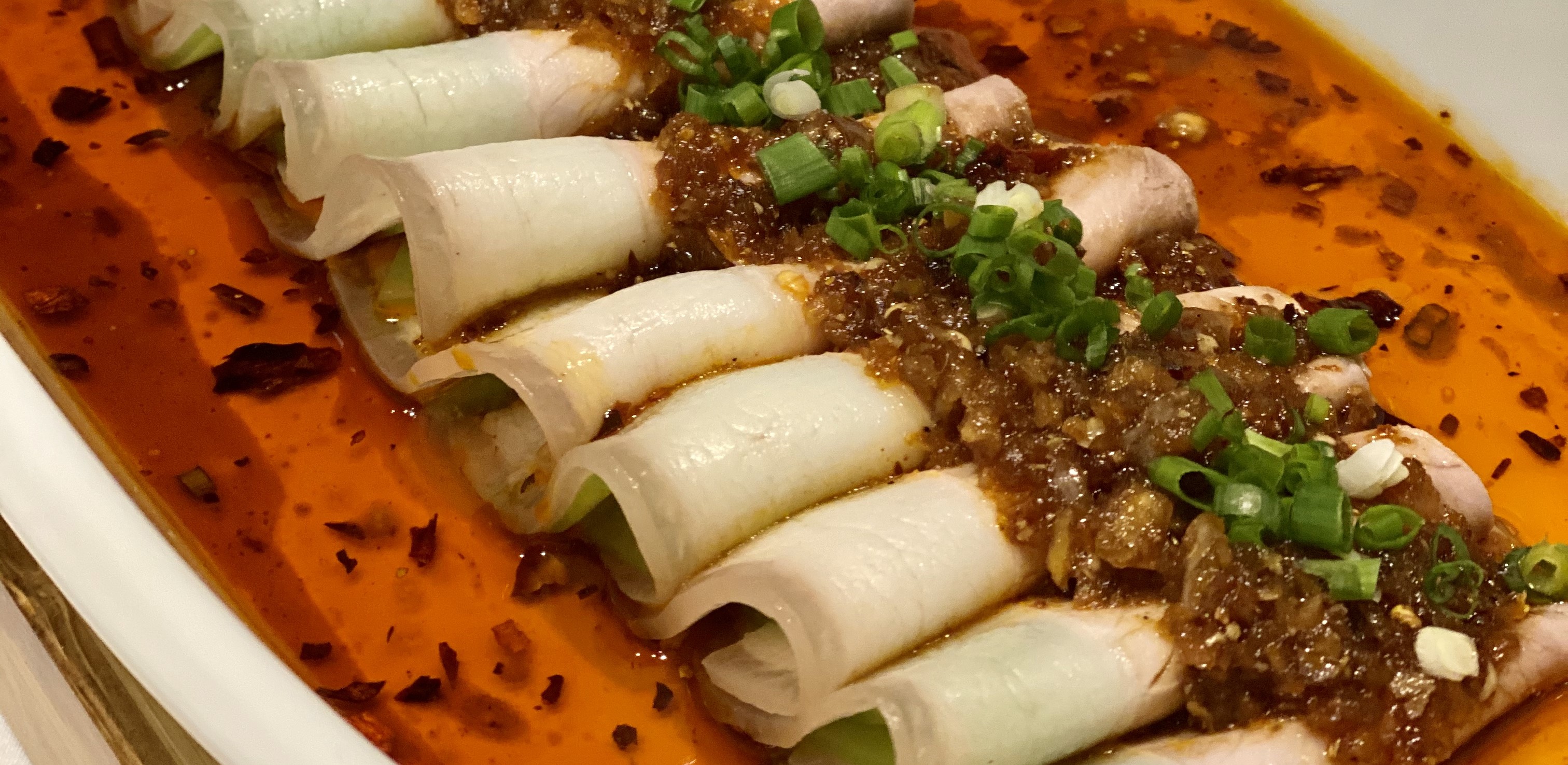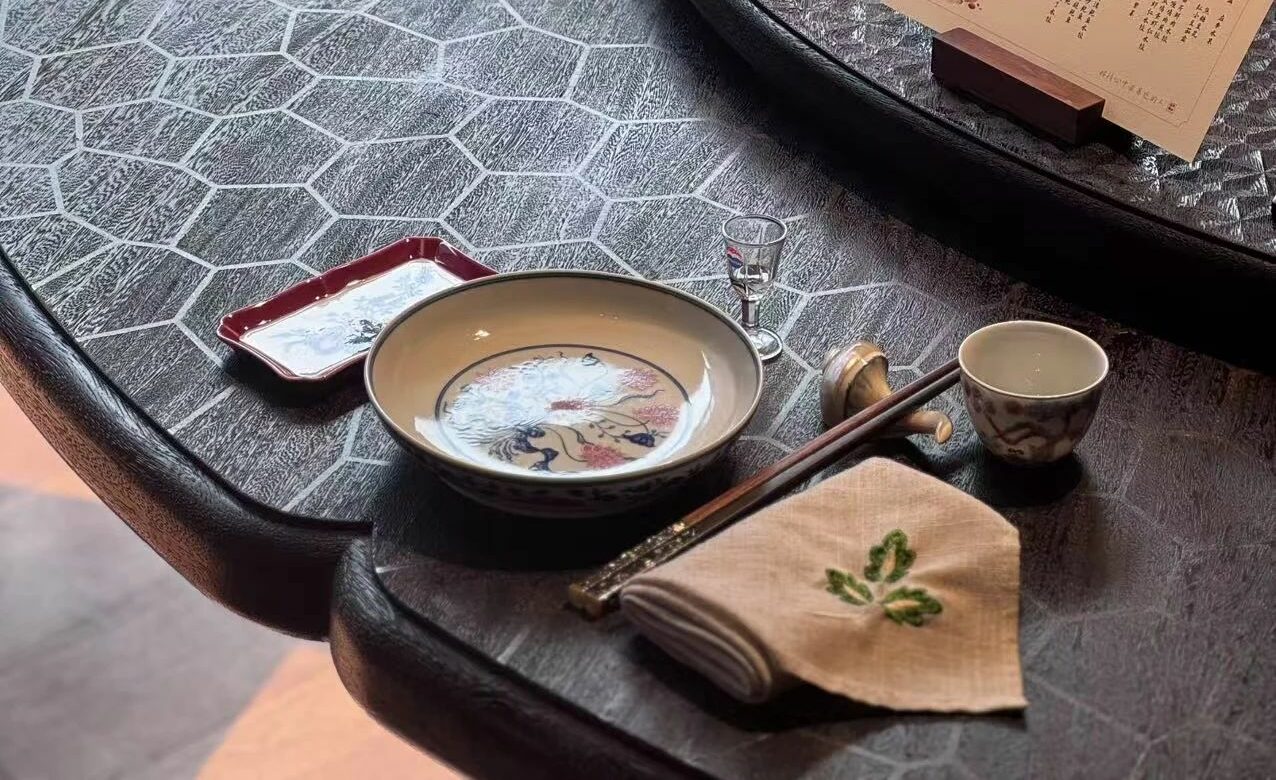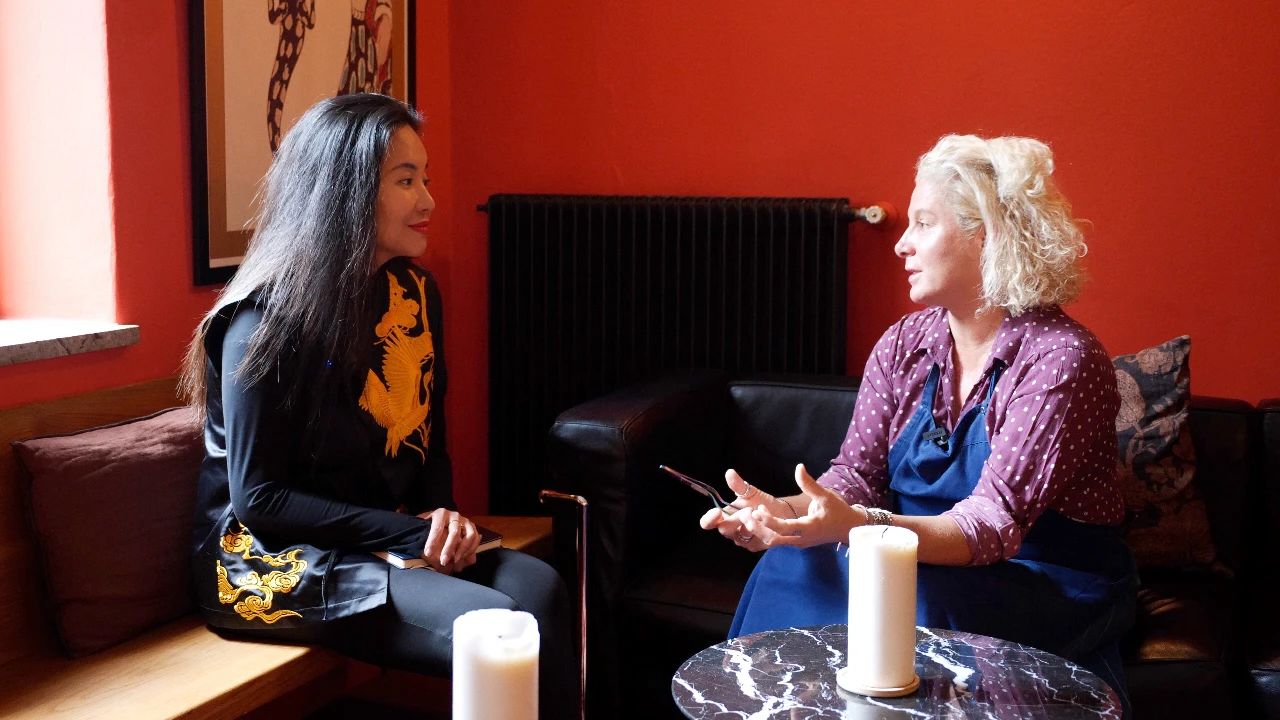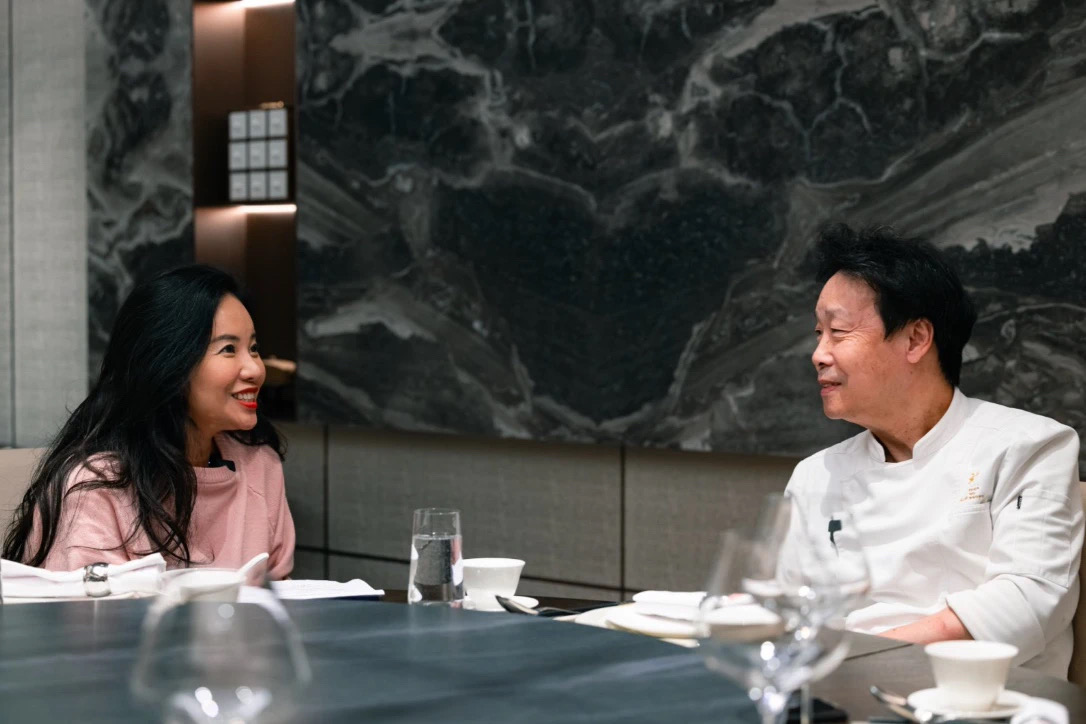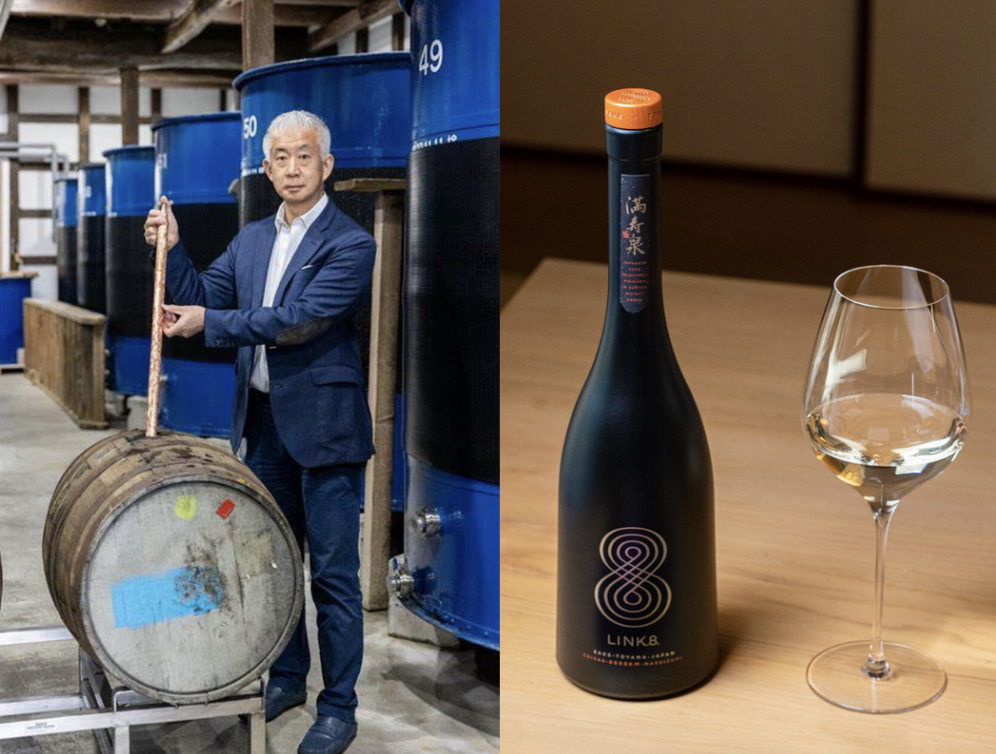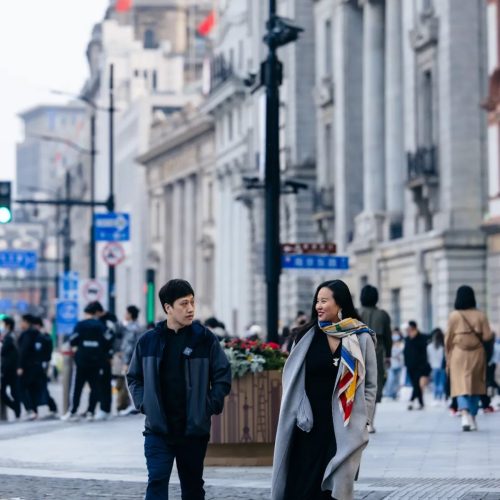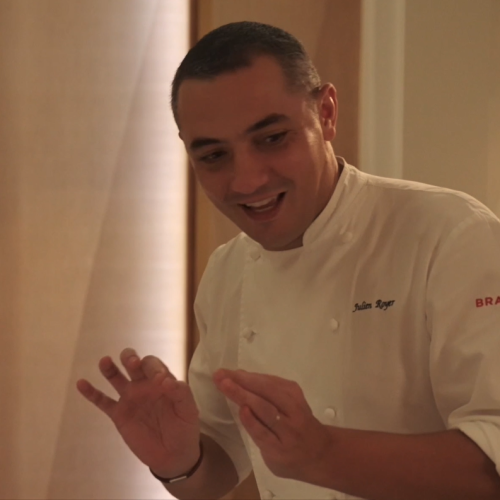I often hear comments that Chengdu may be the next Michelin city. If it’s true, then this city truly fits the bill.
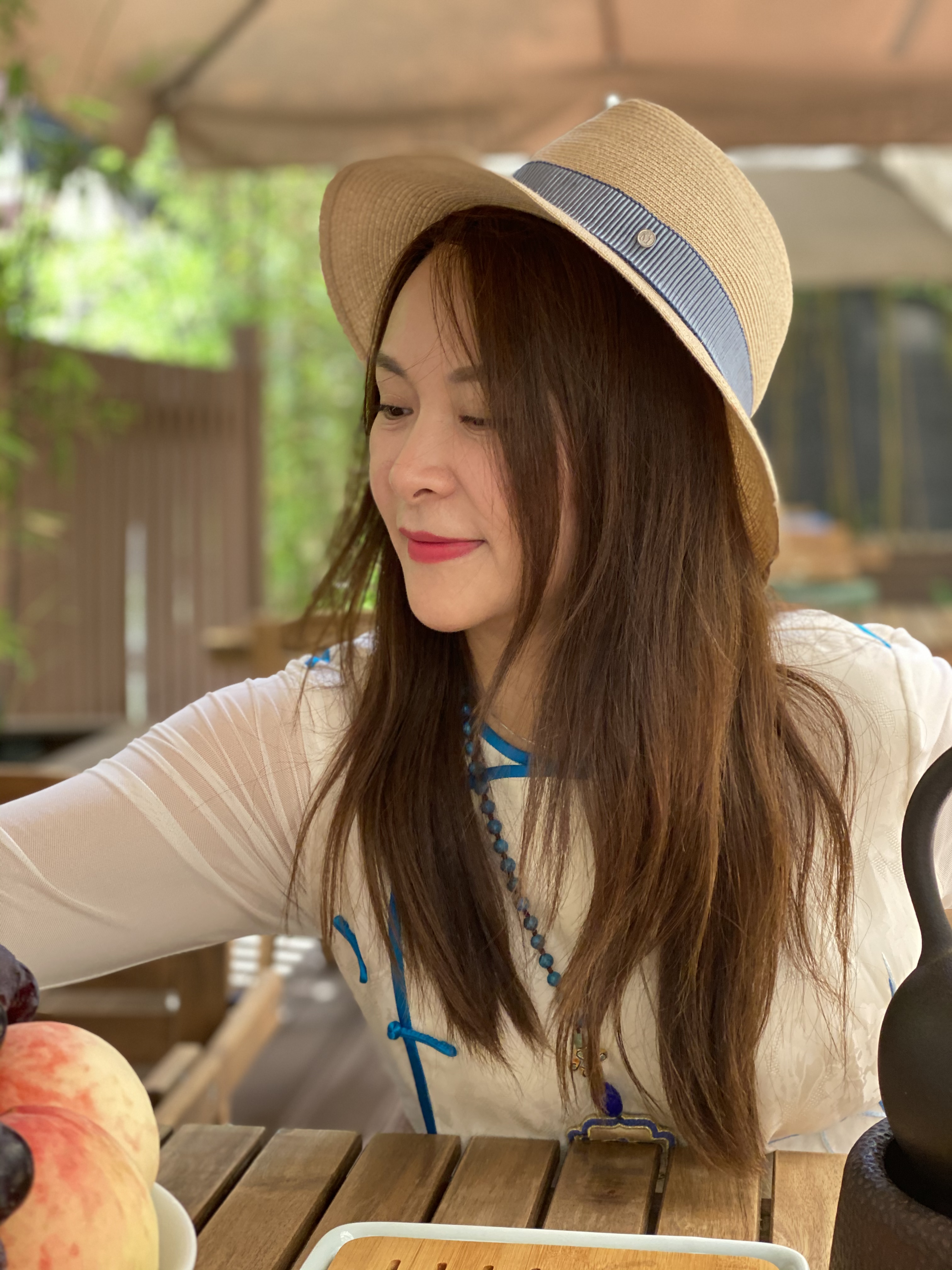
Ms. Zhou Zi Ling, founder of Chengdu Yintan Catering Co., Ltd.

Traditional Sichuan Cuisine
Chef Liu Bo Quan of Hidden Place said the pork butt roast is the first choice raw material for Sichuanese twice-cooked pork. In fact, it specifically refers to the native pigs that are raised freely by farmers. Alternative feed for pigs nowadays tends to produce lean meat. To make twice-cooked pork, lean-to-fat ratio typically needs to be 40% fat and 60% lean, but with current pigs raised being more lean, you would have to cut off some of the lean meat so that the ratio becomes 40% and 60% respectively, therefore the use of pork belly is more suitable to meet these requirements.
 Poached pork slices with garlic sauce
Poached pork slices with garlic sauce



Jocelyn Chen(left), Zhou Ziling(middle), Peng Ziyu(right)
 Jocelyn(left), Liu Deyue(right)
Jocelyn(left), Liu Deyue(right)
 A detour visit of Yuzhilan Chengdu
A detour visit of Yuzhilan Chengdu
I was impressed by the diced pork in pot, which included abalone and other delicacies from the sea, but is still mainly a meat dish. It reminded me of Fuzhou’s Buddha Jumps Over the Wall which comprises of steamed abalone with shark fin and fish maw in broth. The taste is rich and layered. The soup is flavorsome with the essence of all the ingredients and the meat cooked perfectly. The diced pork in pot is first simmered with old hen, old duck, ham, spare ribs, and quail eggs, slowly over a low fire for eight hours. To finish, a small piece of pork belly completes the essence of the ingredients which are all absorbed by the pork belly to preserve the rich taste and flavors.
 Diced pork in pot
Diced pork in pot

Quick fry mandarin fish

Mapo tofu with abalone


Ruyi Gastronomy : 9th Edition
The Ruyi gastronomy event successfully conveys the 24 flavors of Sichuan cuisine through its cooking and expert explanations. We originally expected the event to focus more on the tableware, rather than that of cooking. Surprisingly we were proved wrong and treated with a wonderful and in-depth explanation of each dish by the service staff, with use of beautiful Chinese auspicious words which created a great dining atmosphere as if it was new year. The start of the evening introduced us to the Five Fortune Takeaway Platter which comprised of five cold appetizers with flavors ranging from light to strong that gives an introduction into the different flavor types of Sichuan food. Starting from the tangerine peel and beef, then a mustard flavor with red oil, and sesame sauce on the right hand side, and finally finished with a pickled pepper flavor to clear the mouth. At the end of the tasting, you can see a small goldfish on the bottom of the plate, which we were told symbolizes prosperity forever.
 Five fortune takeaway platter
Five fortune takeaway platter
 Chicken cloud in supreme consommé
Chicken cloud in supreme consommé

Smoked duck with glutinous rice
The stewed snow lotus with Ge Xian Rice was also fascinating, It is a fungus produced in Hefeng, Hubei province. It is said to have various beneficial effects such as improving eyesight and nourishing the liver. It is stewed with snow lotus seeds and added with honey. We are told that: “Chinese people’s eating habits are different from those in the West. We don’t talk so much about whether the food is good or not. Food not only has to satisfy our appetite, but also has to pay attention to whether the food can protect our body. This is one of the advantages of Chinese chefs. ”The design of the menu and the balance of the event are all made by the master chef. Each set of dishes are brought out in unison and in one go. Having written this, I feel I will definitely visit again.

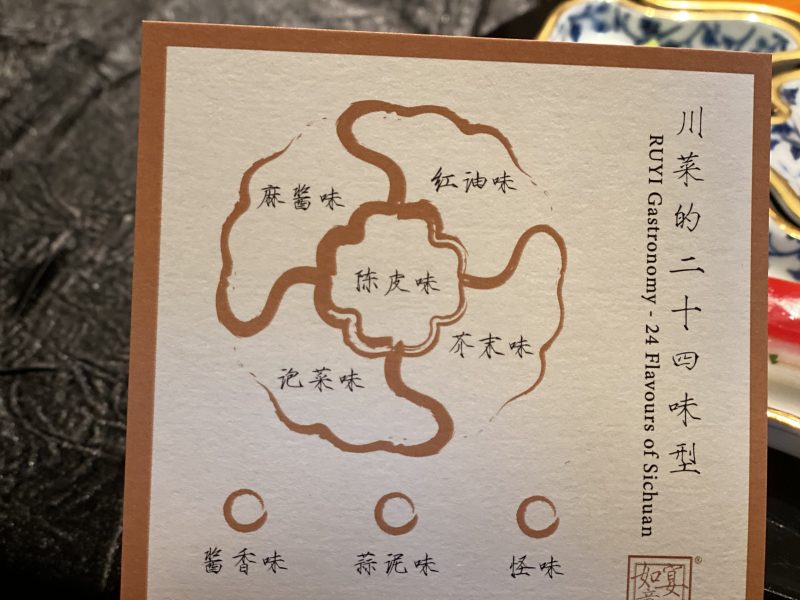
Chengdu gourmet Liu Deyue said that Ruiyi Banquet emphasized the art of fine dining that dates back to the Tang Dynasty at a time when tableware is deeply connected. It perfectly highlights the beauty of Sichuan cuisine and its impact on both past to present. He gave a very positive evaluation that the dishes are designed by people who have seen the world and have an international outlook.
The founder of the RUYI Gastronomy event, Desmond, CEO of Legle, is a successful entrepreneur and a senior gourmet. He has tasted many dishes from many cultures from around the world which has helped in his ability to analyze food, together with his partner chef Chen Lanshu, best female chef Asia 2014. They make a lovely couple. It turns out that this gastronomy event comes from a creation of love. Currently there are only three private rooms available at RUYI Gastronomy, which needs to be booked one week in advance. For any food lovers, chefs, or restaurant owners who want to further understand the concepts and workings of Sichuan cuisine, RUIYI Gastronomy provides the perfect place to start.
Sichuan Hanyuan pepper


The theme of Sichuan pepper autumn feast revolves around Sichuan peppercorns and uses modern Sichuan cuisine to interpret the beauty of the Sichuan pepper. In addition to highlighting the color and fragrance, the feast seeks to add a fourth sensory element to the traditional three. This includes: smell, taste, vision, and an additional immersive aroma & taste combination of the Sichuan pepper. To experience these top Sichuan peppers, each guest has to follow certain procedures such as smelling the fragrance and taste testing of each Sichuan pepper.

 The Sichuan pepper feast is divided into four chapters: fragrance smelling, blending, revel, and returning. In the chapter of blending, one dish is taken as the peerless double pride, with the homophones “Hua Jiao” and “Hua Jiao”. Use of New Zealand fish maw, combined with Sichuan’s local top-grade Sichuan pepper and green chili, to make creative flavored dishes.
The Sichuan pepper feast is divided into four chapters: fragrance smelling, blending, revel, and returning. In the chapter of blending, one dish is taken as the peerless double pride, with the homophones “Hua Jiao” and “Hua Jiao”. Use of New Zealand fish maw, combined with Sichuan’s local top-grade Sichuan pepper and green chili, to make creative flavored dishes.
 Peerless double pride
Peerless double pride
 Smoky clay pot roasted pigeon with Sichuan pepper leaves
Smoky clay pot roasted pigeon with Sichuan pepper leaves
Zi Ling said: “A small Sichuan pepper has many uses which reflect the wisdom of our ancestors and their ability to apply their knowledge in Chinese culture. The five thousand years of culture is blended. Just like the Sichuan pepper, it bears many fruits, and the taste of Sichuan pepper has a historical outlook. ” This meal truly gave me a deeper understanding of Sichuan peppercorns. Every year this season, I should fly to Chengdu get the full tasting experience brought by the Sichuan peppers of each season.
Over Night in Chengdu
This time I spent two nights in Chengdu, and stayed at The Temple House one night. The room was spacious and elegant, had a mini bar in the room with cellar, equipped with champagne and red and white wines at retail prices. This has always been a detail that people talk about. Interestingly, the Temple House is built along Taikoo Li Shopping Center, and on the other side is the old house complex. These two worlds of conflicting beauty give a unique crossing of old vs new and makes for a very intriguing atmosphere.



 The Temple House
The Temple House
The Hidden Place Ttraditional Sichuan Cuisine
📍 1st Floor, Yinlu Hotel, 57 Shengxing Street, Chengdu
☎ 028-65777137;13980691108
Ruyi gastronomy-Family Xu Cuisine
(from November 2019)
📍 Room 605, 6 / F, Renhe Xincheng Shopping Center, No. 505, West Section of Fucheng Avenue, Chengdu
☎ 028-63913306;028-63913308
Silver pot
📍 No.532, 5 / F, Building M6, ICP Office Building, 300 Jiaozi Avenue, Chengdu

转载或其他合作事宜
请联系微信号:tastytrip2020
欢迎关注
微博:TastyTrip
Instagram:_tastytrip_


